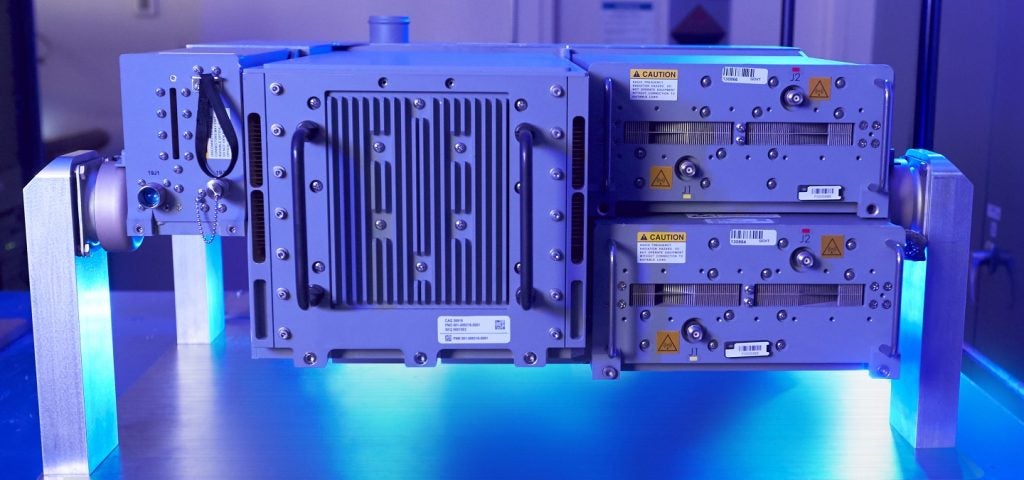Northrop Grumman’s AN/ALQ-257 Integrated Viper Electronic Warfare Suite (IVEWS) has completed US Air Force (USAF) testing in the service’s Joint Preflight Integration of Munitions and Electronic Sensors (J-PRIMES) facility.
During a series of tests, AN/ALQ-257 IVEWS was subjected to a series simulated complex radio frequency spectrum threats in the J-PRIMES anechoic chamber. The system demonstrated the ability to detect, identify and counter advanced radio frequency threats while operating safely with other F-16 systems, the company announced in a 4 September 2024 release.
The completion of this process allows AN/ALQ-257 IVEWS to begin flight testing on USAF F-16 aircraft.

James Conroy, vice president, navigation, targeting and survivability at Northrop Grumman, said the testing completion marked the IVEWS “readiness to protect US and international F-16 fleets”.
Meanwhile, USAF Colonel Michael Rigoni, director, F-16 International Electronic Warfare Systems, said the results were the “culmination” of three years of “extensive” US government system-level testing.
In 2022, Northrop Grumman secured a contract to advance the integration of the AN/ALQ-257 IVEWS onto the USAF’s F-16 fighter fleet.
Insight into new USAF EW system
The AN/ALQ-257 IVEWS is designed to give F-16 electronic warfare (EW) capabilities on a par with fifth-generation aircraft, significantly enhancing survivability for operations in contested electromagnetic spectrum environments.
Northrop Grumman states that its ultra-wideband suite can detect, identify, and counter advanced radio frequency threats, including millimetre wave systems, and has pulse-to-pulse interoperability with the AN/APG-83 SABR active electronically scanning array (AESA) radar fitted to USAF F-16 fighters.
The system was selected as the US programme of record for F-16 electronic warfare in 2019.
North America forecast to lead global EW market
According to a 2023 GlobalData forecast of the global EW market, the sector, valued at $13.9bn in 2023, was projected to grow at a compound annual growth rate of 4.6% through to 2033, reaching $21.8bn.
Split into four segments (airborne, land, naval, and space), the market was forecast to be dominated by the airborne market, which accounts for 55.1% of the sector, followed by land with a 28.3% share.
Among geographic segments, North America was projected to dominate the sector with a share of 34.1%, followed by Asia-Pacific and Europe, with shares of 29.0% and 27.3%, respectively.









